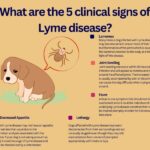Can Dogs Eat Raw Chicken Gizzards
Can Dogs Eat Raw Chicken Gizzards? The Truth About This Controversial Canine Cuisine
Dogs are known for their love of meat, but not all meats are created equal. Some can be harmful or even deadly to dogs if not prepared or cooked properly. One such meat that often raises questions among dog owners is raw chicken gizzards. Can dogs eat them safely and healthily? In this article, we will explore the benefits and risks of feeding your dog raw chicken gizzards, as well as some tips on how to do it right.
What Are Chicken Gizzards?
Before we dive into the topic of whether dogs can eat chicken gizzards, let’s first define what they are. A gizzard is a muscular part of the digestive system in birds, including chickens. It contains small stones or grit that help grind up food before it enters the stomach. Gizzards are often removed from chickens when they are processed for human consumption, but they can be found in many raw or frozen whole chicken products sold in pet stores or supermarkets.
Benefits of Raw Chicken Gizzards for Dogs
Now that we know what chicken gizzards are, let’s focus on why some dog owners choose to feed them to their pets. Here are some potential benefits of raw chicken gizzards for dogs:
1. High protein: Chicken gizzards are a good source of animal protein, which is essential for building and repairing muscle tissue, supporting immune function, and providing energy.
2. Low fat: Compared to other parts of the chicken, such as skin or thighs, gizzards have less fat content and therefore may be suitable for dogs on a low-fat diet.
3. Natural teeth cleaner: Chewing on raw chicken gizzards can help scrape off plaque and tartar from your dog’s teeth, promoting dental hygiene.
4. Affordable: Chicken gizzards are relatively inexpensive and widely available, making them a cost-effective option for feeding raw.
Risks of Raw Chicken Gizzards for Dogs
While there are potential benefits to feeding your dog raw chicken gizzards, there are also some risks that you need to be aware of. Here are some reasons why some experts advise against feeding dogs raw chicken gizzards:
1. Bacterial contamination: Raw chicken, including gizzards, may contain harmful bacteria such as Salmonella or Campylobacter that can cause food poisoning in both dogs and humans. These bacteria can survive freezing, so thawing or handling raw chicken carries a risk of contamination.
2. Nutritional imbalance: Although high in protein, chicken gizzards may not provide all the essential nutrients that your dog needs to thrive. Feeding too much of one type of meat can lead to a lack of variety in the diet and potential nutrient deficiencies.
3. Choking hazard: Chicken gizzards are tough and chewy, which is good for dental health but bad if your dog swallows large chunks without chewing properly. This can lead to choking or obstructed airways.
4. Allergic reaction: Some dogs may develop an allergic reaction to chicken or other poultry products, including gizzards, causing symptoms such as itching, rashes, or digestive upset.
How to Safely Feed Your Dog Raw Chicken Gizzards
If you still want to feed your dog raw chicken gizzards despite the risks involved, here are some tips on how to do it safely and responsibly:
1. Choose high-quality sources: Look for reputable brands or suppliers that use human-grade chicken and follow strict safety standards for handling and processing their products.
2. Handle with care: Always wash your hands thoroughly before and after handling raw chicken gizzards, as well as any utensils or surfaces that come into contact with them.
3. Freeze first: To reduce the risk of bacterial contamination, freeze the chicken gizzards for at least 48 hours before feeding them to your dog. This will kill most parasites and bacteria.
4. Thaw safely: When thawing frozen chicken gizzards, do it in the fridge or microwave, not at room temperature, to avoid bacterial growth.
5. Monitor your dog: Watch your dog closely when he eats raw chicken gizzards, making sure he chews them well and doesn’t swallow large pieces. Also, observe any signs of digestive upset or allergic reaction and seek veterinary advice if necessary.
Conclusion
In conclusion, can dogs eat raw chicken gizzards? The answer is yes, but with caution. While there are potential benefits to feeding your dog this meaty treat, there are also some risks that you need to weigh carefully. As a responsible pet owner, you should always prioritize your dog’s health and safety over convenience or cost. If in doubt, consult a veterinarian who can advise you on the best diet for your dog’s individual needs and preferences. Remember, a happy and healthy dog is worth more than any meal.



